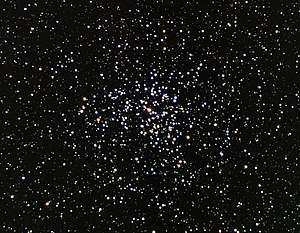M37 | NGC 2099 | Open Cluster | Auriga | 4,500 Light Years Away
Messier 37, also known as the Salt and Pepper Cluster, is an open star cluster located in the constellation Auriga. Discovered by the Italian astronomer Giovanni Batista Hodierna in the 17th century and later independently cataloged by Charles Messier in 1764, this celestial assembly is part of the Milky Way galaxy. Positioned approximately 4,500 light-years away from Earth, Messier 37 is one of the richest and most populous open clusters in our galaxy.
Containing over 500 stars, Messier 37 spans a region of about 24 light-years in diameter and is known for its dense central core, which contributes to its distinctive appearance. The stars within this open cluster exhibit a diverse range of colors, reflecting variations in temperature and composition among its members. Messier 37 is a prominent target for amateur astronomers, as it is easily visible with binoculars and small telescopes under dark skies.
Observations of Messier 37 contribute to our understanding of open star clusters, offering insights into the dynamics of stellar systems and the processes involved in the formation and evolution of stars within our galaxy. The study of such stellar groupings helps astronomers unravel the complexities of star birth and the interactions between stars in shared cosmic environments. Messier 37, with its rich stellar population and visually striking arrangement, adds to the ongoing narrative of star birth and evolution within the intricate tapestry of the cosmos.

